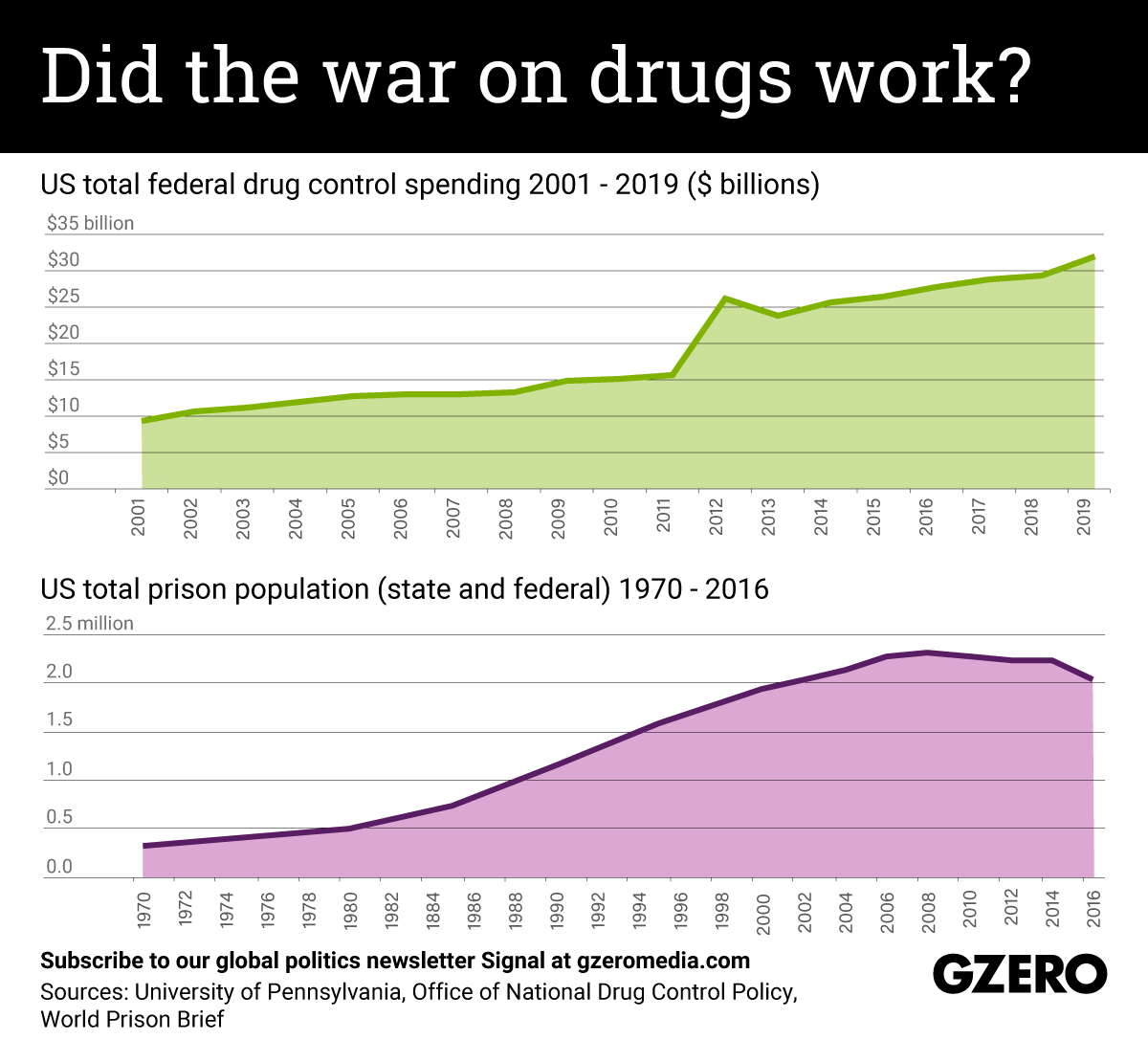June 22, 2021
It's been 50 years since President Richard Nixon declared a war on drugs in the United States, a campaign underscored by punitive policies aimed at eradicating everything to do with illicit drug use. Since then, the US government has spent over $1 trillion on the campaign, roughly a 1,090% increase in spending in just 39 years. But all this money hasn't stopped drug use from surging in recent decades, along with overdose deaths. In fact, the war on drugs' main legacy is that of mass incarceration; severe penalties for drug-related offenses resulted in mostly Black and Latino Americans being thrown into prison. We take a look at government spending on drug control and the prison population size in recent decades.
More For You
Global conflict was at a record high in 2025, will 2026 be more peaceful? Ian Bremmer talks with CNN’s Clarissa Ward and Comfort Ero of the International Crisis Group on the GZERO World Podcast.
Most Popular
Think you know what's going on around the world? Here's your chance to prove it.
Indian Prime Minister Narendra Modi isn’t necessarily known as the greatest friend of Muslim people, yet his own government is now seeking to build bridges with Afghanistan’s Islamist leaders, the Taliban.
French President Emmanuel Macron, German Chancellor Friedrich Merz, Ukrainian President Volodymyr Zelenskiy, U.S. Special Envoy Steve Witkoff and businessman Jared Kushner, along with NATO Secretary-General Mark Rutte and otherEuropean leaders, pose for a group photo at the Chancellery in Berlin, Germany, December 15, 2025.
Kay Nietfeld/Pool via REUTERS
The European Union just pulled off something that, a year ago, seemed politically impossible: it froze $247 billion in Russian central bank assets indefinitely, stripping the Kremlin of one of its most reliable pressure points.
© 2025 GZERO Media. All Rights Reserved | A Eurasia Group media company.
